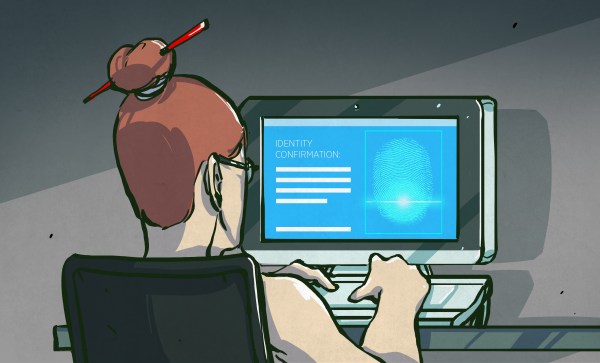The reports of the death of automotive AM radio may have been greatly exaggerated. Regular readers will recall us harping on the issue of automakers planning to exclude AM from the infotainment systems in their latest offerings, which doesn’t seem to make a lot of sense given the reach of AM radio and its importance in public emergencies. US lawmakers apparently agree with that position, having now introduced a bipartisan bill to require AM radios in cars. The “AM for Every Vehicle Act” will direct the National Highway Transportation Safety Administration to draw up regulations requiring every vehicle operating on US highways to be able to receive AM broadcasts without additional fees or subscriptions. That last bit is clever, since it prevents automakers from charging monthly fees as they do for heated seats and other niceties. It’s just a bill now, of course, and stands about as much chance of becoming law as anything else that makes sense does, so we’re not holding our breath on this one. But at least someone recognizes that AM radio still has a valid use case.
Slider4830 Articles
How Far Can An EULA Go?
We read this news with mixed glee and horror: a company called Telly is giving TVs away, for the low price of having to live with an always-on advertisement bar and some pretty stringent terms and conditions. Break the terms, and they’ll repossess your TV. If you don’t give them the TV, they have your credit card on record and they think the set is worth $1,000.
The hacker in me sees free hardware, so I checked out the terms and conditions, and it doesn’t look good. They’ve explicitly ruled out opening up or physically modifying the device, and it has to continually have WiFi – for which you pay, naturally. It sounds like it could easily tell if you try to tamper with it. My next thought was, perhaps too cynically, to get one, put it in the closet, and wait for the company to go bankrupt. Because you know that business model isn’t going to last.
But it’s clear that they’ve seen through me. The most bizarre clause is that you have to “Use the Product as the primary television in Your household”. Now, we’re not lawyers, but it seems like an amazing stretch that they can tell you how intensively you are to use the product. Can you imagine a license with a keyboard that demanded that you only use it to write sci-fi novels, or that you have to use it more than any other keyboard?
Nope. Too many hoops to jump through for a silly free TV. You can keep your dystopian future.
Faster Glacier Melting Mechanism Could Cause Huge Sea Level Rises
When it comes to the issue of climate change, naysayers often contend that we have an incomplete understanding of the Earth’s systems. While humanity is yet to uncover all the secrets of the world, that doesn’t mean we can’t act on what we know. In many cases, as climate scientists delve deeper, they find yet more supporting evidence of the potential turmoil to come.
In the stark landscapes of Greenland, a team of intrepid researchers from the University of California, Irvine, and NASA’s Jet Propulsion Laboratory have unearthed a hidden facet of ice-ocean interaction. Their discovery could potentially flip our understanding of sea level rise on its head.
Continue reading “Faster Glacier Melting Mechanism Could Cause Huge Sea Level Rises”
This Week In Security: .zip Domains, Zip Scanning
The world may not be ready, but the .zip Top Level Domain (TLD) is here. It’s a part of the generic TLD category, which was expanded to allow applications for custom TLDs. Google has led the charge, applying for 101 such new TLDs, with .zip being one of the interesting ones. Public registration for .zip domains has been open for a couple weeks, and some interesting domains have been registered, like update.zip, installer.zip, and officeupdate.zip.
The obvious question to ask is whether this new TLD can be abused for scamming and phishing purposes. And the answer is yes, sure it can. One of the trickiest ways is to use the AT symbol @ in a URL, which denotes user info at the beginning of the URL. It usually is used to include a username and password, like http://username:password@192.168.1.1/. That is pretty obvious, but what about https://google.com@bing.com? Still looks weird. The catch that really prevents this technique being abused is that slashes are disallowed in user data, so a abusive URL like https://google.com∕gmail∕inbox@bing.com is right out.
Except, take a look at that last link. Looks like it has slashes in it, so it should take you to google, and ignore the AT symbol. But it doesn’t, it goes to Bing. You may have guessed, it’s Unicode shenanigans again. Those aren’t slashes, they’re U2215, the division slash. And that means that a .zip TLD could be really sneaky, if the apparent domain is one you trust. Continue reading “This Week In Security: .zip Domains, Zip Scanning”
Revisiting Folk Wisdom For Modern Chronic Wound Care
In the constant pursuit of innovation, it’s easy to overlook the wisdom of the past. The scientific method and modern research techniques have brought us much innovation, which can often lead us to dismiss traditional cultural beliefs.
However, sometimes, there are still valuable kernels of truth in the folklore of yesteryear. This holds true in a medical study from Finland, which focused on the traditional use of spruce resin to treat chronic wounds, breathing new life into an age-old therapy.
Continue reading “Revisiting Folk Wisdom For Modern Chronic Wound Care”
Two Factor Authentication Apps: Mistakes To Malware
Everyone in security will tell you need two-factor authentication (2FA), and we agree. End of article? Nope. The devil, as always with security, is in the details. Case in point: in the last few weeks, none less than Google messed up with their Google Authenticator app. The security community screamed out loud, and while it’s not over yet, it looks like Google is on the way to fixing the issue.
Since 2FA has become a part of all of our lives – or at least it should – let’s take a quick dip into how it works, the many challenges of implementing 2FA correctly, what happened with Google Authenticator, and what options you’ve got to keep yourself safe online.
Continue reading “Two Factor Authentication Apps: Mistakes To Malware”
Microbubbles And Ultrasound: Getting Drugs Through The Blood-Brain Barrier
The brain is a rather important organ, and as such, nature has gone to great lengths to protect it. The skull provides physical protection against knocks and bumps, but there’s a lesser-known defense mechanism at work too: the blood-brain barrier. It’s responsible for keeping all the nasty stuff – like bacteria, viruses, and weird chemicals – from messing up your head.
The blood-brain barrier effectively acts as a filter between the body’s circulatory system and the brain. However, it also frustrates efforts to deliver drugs directly to the brain for treating conditions like brain tumors. Now, scientists have developed a new technique that may allow critical life saving drugs to get through the barrier with the help of ultrasound technology.
Continue reading “Microbubbles And Ultrasound: Getting Drugs Through The Blood-Brain Barrier”

















